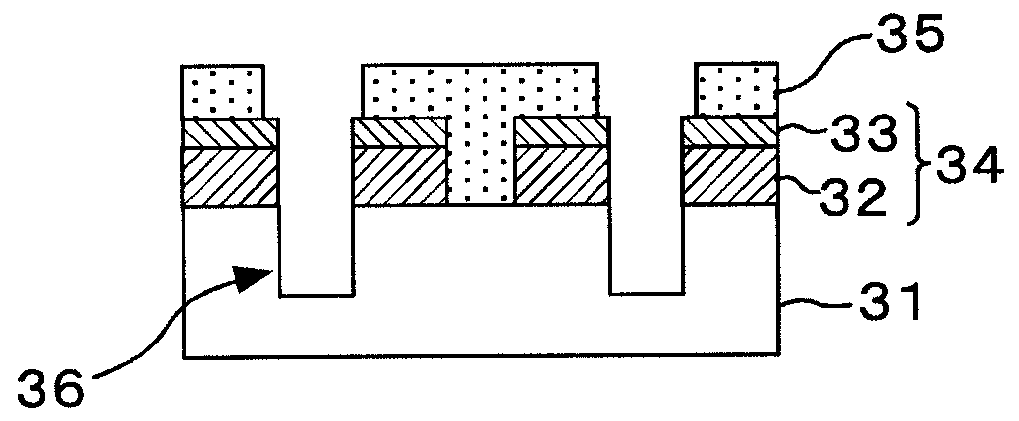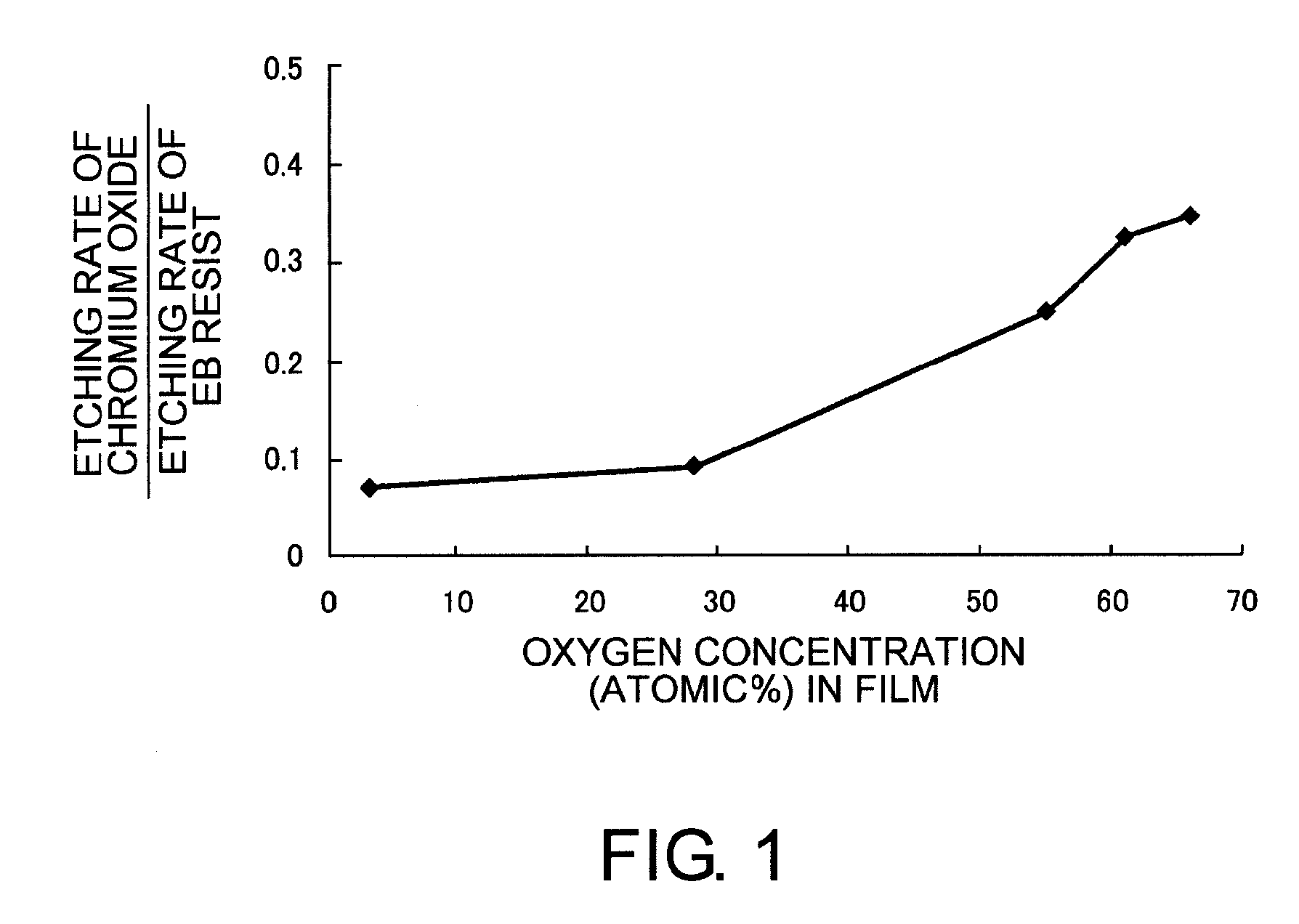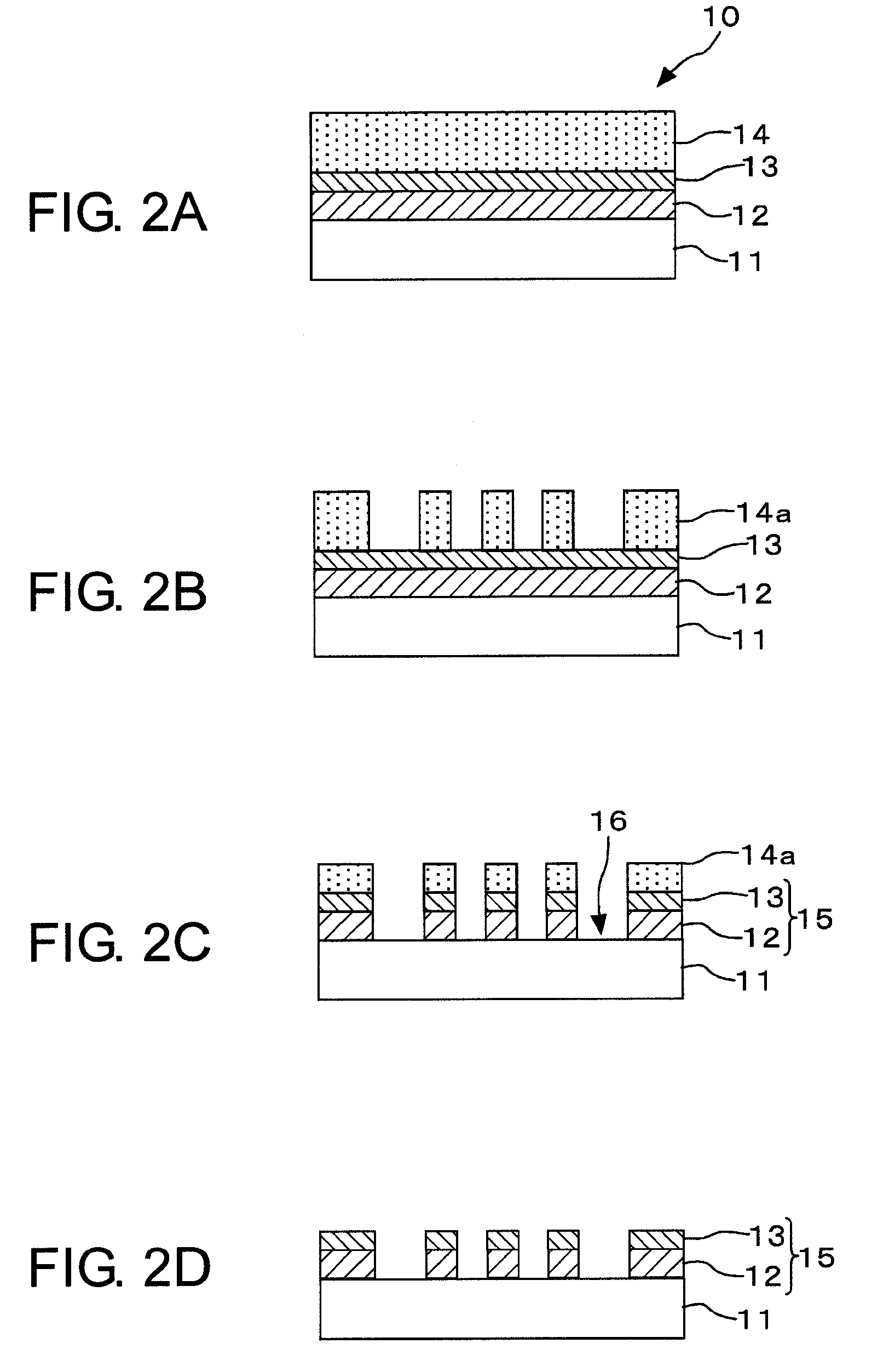Mask blank, method of manufacturing an exposure mask, and method of manufacturing an imprint template
a technology of mask and imprint, which is applied in the field of mask and exposure mask manufacturing methods, and the method of manufacturing an imprint template, can solve the problems of etching bias occurrence, resist reduction or disappearance, and difficulty in correction, and achieve the effect of high pattern accuracy
- Summary
- Abstract
- Description
- Claims
- Application Information
AI Technical Summary
Benefits of technology
Problems solved by technology
Method used
Image
Examples
first embodiment
[0077]As a first embodiment, a binary mask for exposure by an ArF excimer laser will be described. FIGS. 2A to 2D show a manufacturing process of the binary mask according to the first embodiment.
[0078]A mask blank 10 used in this embodiment comprises a light-transmitting substrate 11 on which a laminate film composed of a light-shielding film 12 and a protective film 13 and serving as a thin film for forming a transfer pattern, and a resist film 14 are successively formed in this order. The mask blank 10 is prepared in the following manner.
[0079]As the light-transmitting substrate 11, a synthetic quartz substrate (having a size of 152 mm×152 mm and a thickness of 6.35 mm) was introduced into a sputtering apparatus. A target comprising an alloy of tantalum (Ta) and hafnium (Hf) (tantalum:hafnium=80:20 in atomic ratio) was sputtered by a xenon gas to deposit the light-shielding film 12 comprising a tantalum-hafnium alloy and having a thickness of 42 nm on the synthetic quartz substra...
second embodiment
[0084]As a second embodiment, a reflective mask for EUV exposure will be described. FIGS. 3A and 3B show a manufacturing process of the reflective mask according to the second embodiment.
[0085]A reflective mask blank 20 used in this embodiment comprises a substrate 21 on which a multilayer reflective film 22 for reflecting exposure light, a silicon film 23 formed on the multilayer reflective film 22, and a ruthenium-niobium alloy film 24, a laminate film which is composed of an absorber film 25 for absorbing the exposure light (for preventing reflection of the exposure light) and a protective film 26 and which serves as a thin film for forming a transfer pattern, and a resist film 27 are successively formed in this order. The ruthenium-niobium alloy film 24 serves to protect the multilayer reflective film 22 from the environment during patterning and pattern correction of the laminate film composed of the absorber film 25 and the protective film 26.
[0086]The reflective mask blank 20...
third embodiment
[0092]As a third embodiment, a phase shift mask for exposure by an ArF excimer laser will be described. FIGS. 4A and 4B show a manufacturing process of the phase shift mask according to the third embodiment.
[0093]A mask blank used in this embodiment comprises a light-transmitting substrate 31 on which a laminate film composed of a light-shielding film 32 and a protective film 33 and serving as a thin film for forming a transfer pattern, and a resist film are successively formed in this order.
[0094]The mask blank is prepared in the following manner like in the first embodiment. A target comprising an alloy of tantalum (Ta) and hafnium (Hf) (tantalum:hafnium=80:20 in atomic ratio) was sputtered by a xenon gas to deposit the light-shielding film 32 comprising a tantalum-hafnium alloy and having a thickness of 42 nm on a synthetic quartz substrate as the light-transmitting substrate 31. Thereafter, a chromium target was sputtered by a mixed gas of argon and oxygen to deposit the thin fi...
PUM
| Property | Measurement | Unit |
|---|---|---|
| width | aaaaa | aaaaa |
| width | aaaaa | aaaaa |
| thickness | aaaaa | aaaaa |
Abstract
Description
Claims
Application Information
 Login to View More
Login to View More - R&D
- Intellectual Property
- Life Sciences
- Materials
- Tech Scout
- Unparalleled Data Quality
- Higher Quality Content
- 60% Fewer Hallucinations
Browse by: Latest US Patents, China's latest patents, Technical Efficacy Thesaurus, Application Domain, Technology Topic, Popular Technical Reports.
© 2025 PatSnap. All rights reserved.Legal|Privacy policy|Modern Slavery Act Transparency Statement|Sitemap|About US| Contact US: help@patsnap.com



